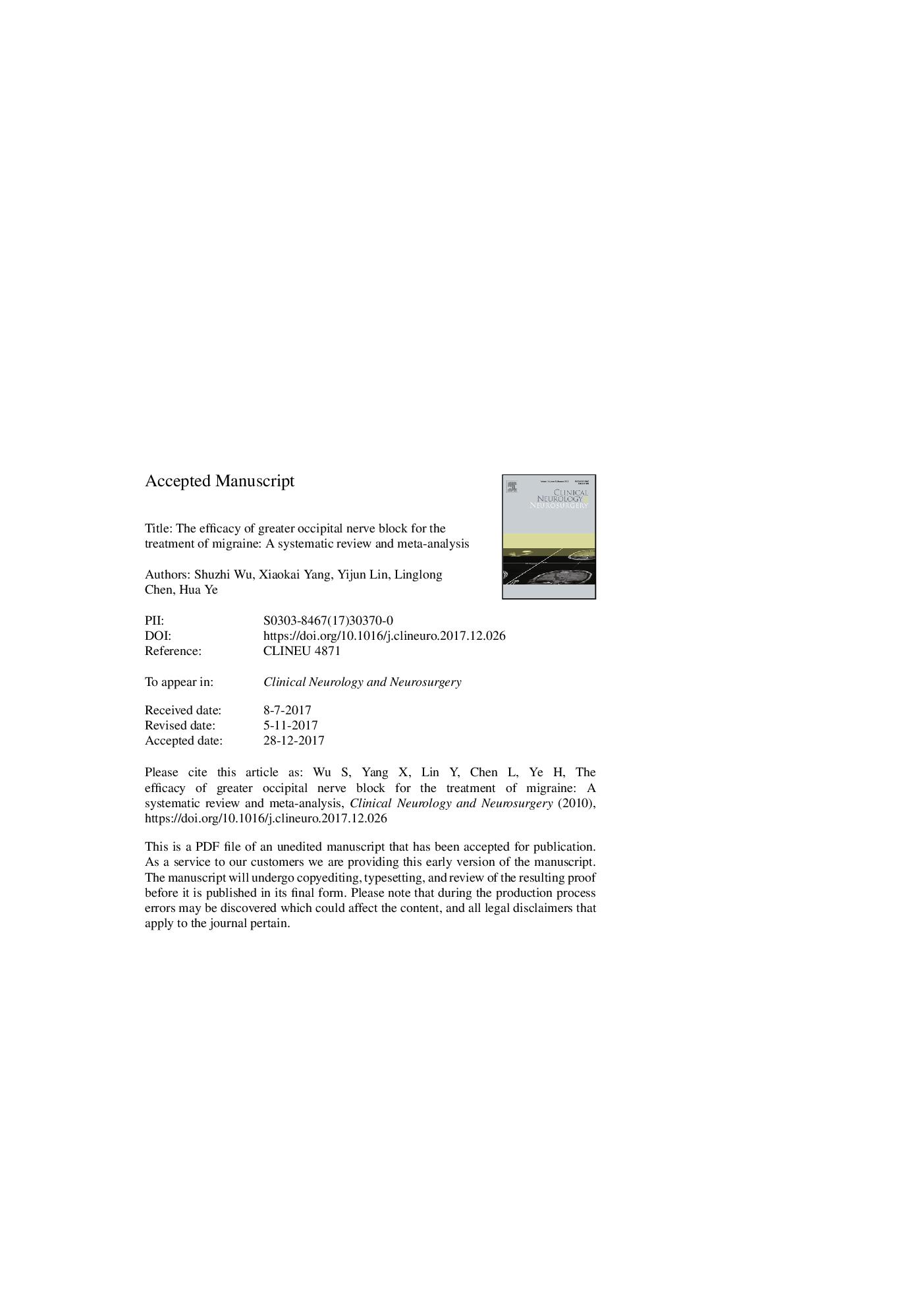| Article ID | Journal | Published Year | Pages | File Type |
|---|---|---|---|---|
| 8681953 | Clinical Neurology and Neurosurgery | 2018 | 14 Pages |
Abstract
Greater occipital nerve (GON) block has some potential in treating migraine. We conduct a systematic review and meta-analysis to investigate the impact of GON block on pain management of migraine. We have systematically searched randomized controlled trials (RCTs) assessing the efficacy of GON block versus placebo for migraine in various databases including PubMed, EMbase, Web of science, EBSCO, and Cochrane library databases. The primary outcome is pain intensity. Meta-analysis is performed using the random-effect model. Seven RCTs are included in the meta-analysis. Compared with control intervention in migraine patients, GON block intervention can significantly reduce pain intensity (Mean differenceâ¯=â¯â1.24; 95% CIâ¯=â¯â1.98 to â0.49; Pâ¯=â¯0.001) and analgesic medication consumption (Mean differenceâ¯=â¯â1.10; 95% CIâ¯=â¯â2.07 to â0.14; Pâ¯=â¯0.02), but has no remarkable impact on head duration (Mean differenceâ¯=â¯â6.96; 95% CIâ¯=â¯â14.09 to 0.18; Pâ¯=â¯0.0.06) and adverse events (RRâ¯=â¯0.93; 95% CIâ¯=â¯0.52 to 1.65; Pâ¯=â¯0.80). GON block intervention is able to significantly reduce pain intensity and analgesic medication consumption in migraine patients.
Related Topics
Life Sciences
Neuroscience
Neurology
Authors
Hehui Zhang, Xiaokai Yang, Yijun Lin, Linglong Chen, Hua Ye,
